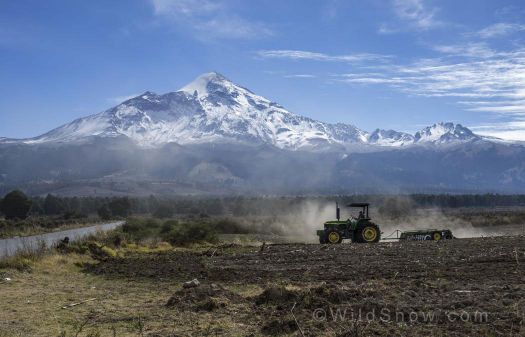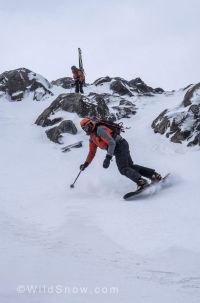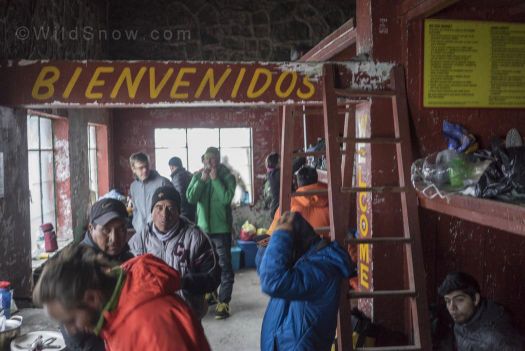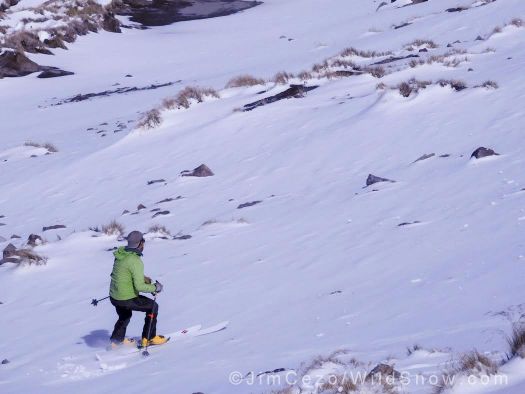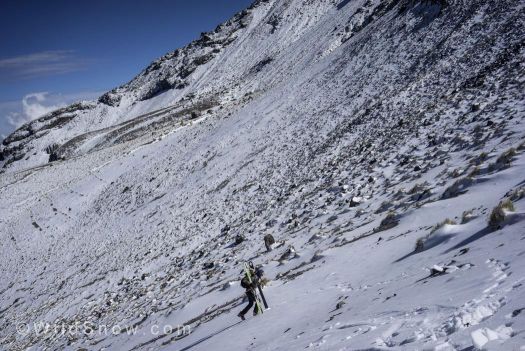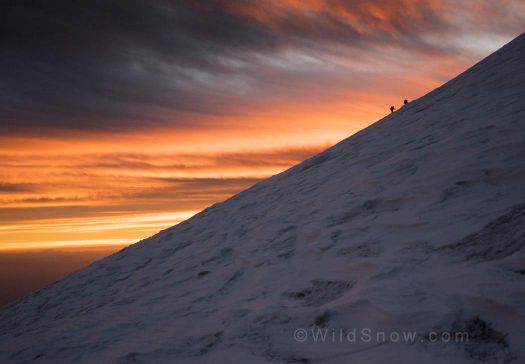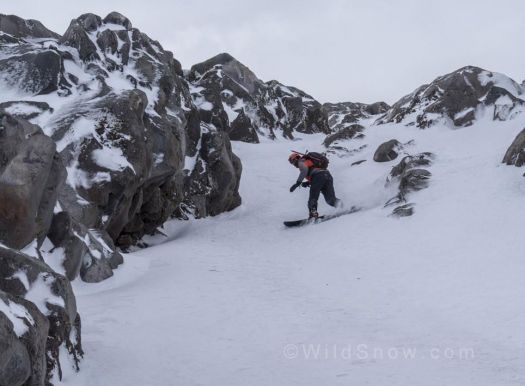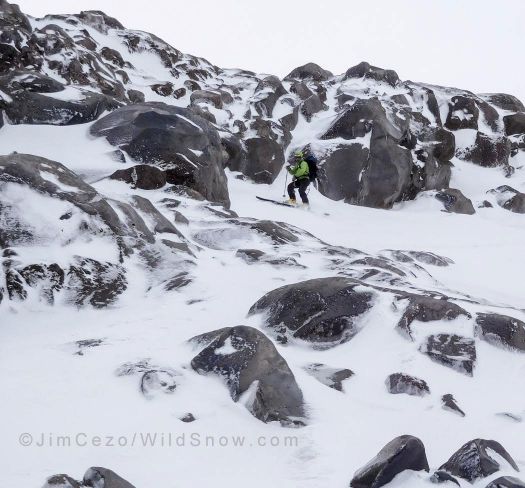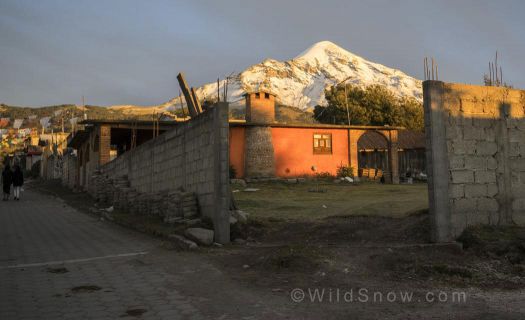Once upon a time in Mexico travelers from the north could only be found sipping mojitos on some palm clad beach, eating tacos in Mexico City, or perhaps taking part in illicit activities in Juarez. However, with the growth of ski mountaineering many travelers (by which I mean very few) are looking south of the border for their next ski touring adventure.
I have always had an affinity for tacos and snow sports, so naturally a chance to combine the two made sense. I found myself in Mexico over an extended MLK weekend with Jim Cezo and Marc Shapiro in search of near equatorial turns, a better understanding of El Ninô, and subtropical adventure.
Jim and I both live in Colorado and I have long since forgiven him for being a snowboarder. He is a frequent adventure buddy and seems to share my knack for type-two fun in the mountains. Marc is a college buddy. He has freed his heel and lost his mind over the last few years. Last time I took a ski trip with Marc we ended up in a whiteout coming off of the Wapta Ice Field after a massive snowstorm, we got lost and almost slept in the outhouse of the Bow Hut. All in all I was super psyched to head out with these two, knowing an adventure awaited us.
Now before I go much further let me bite a couple of bullets. This trip is silly, carbon intensive, contrived, and all around impractical.
Okay, now back to the whole Mexico ski thing. We flew to Mexico City on January 14th rented a car and drove to San Miguel Zoapan, a small village below Pico De Orizaba (18491’), the country’s highest and North America’s third highest peak.
Last year Joey Schusler released 55-hours in Mexico, a short film about a ninja-style weekend Orizaba ski trip. Silly ideas are still silly ideas, regardless of whether or not others have already taken part in such folly. We were psyched to head south on a similar adventure.
Normally the mountain is dry during the winter months, icy during spring and early summer, and wet summer and fall. Most of the few crazies who have headed there to ski choose October through December, with hopes of a bit more snow but a good chance of decent weather. We picked January out of necessity — it was the only chance we had to get away, and it was looking like an El Niño snowpack at 19 degrees north latitude was going to give us a good mid winter window.
Jim put the pedal of our rented suburban to floor a couple hours outside of Mexico City, barely escaping an 18-wheeler that nearly merged us into a concrete medium.
“Guys, we almost just died,” he said.
Luckily while driving in Mexico is an adventure all to itself, the transport was otherwise without mishap. We made it to Zoapan in one piece. The only info we got before arriving was that we should go to the village and ask around for Roberto (known locally as ‘Oso’ or ‘the bear’). We pulled in at 10pm and indeed the first person we asked pointed us in the right direction, which was surprising since we don’t speak Spanish and they didn’t speak English.
We found the lodge run by Oso, welcoming us with dinner and beer, and the team at Orizaba Mountain Guides (OMG).
OMG set us up a ride up to the mountain, water and a stove for the hut, and made the logistics a piece of cake. Thanks OMG.
The next morning we piled into the OMG 1970s era hatchbacks and got a ride up to the Piedra Grande Hut at 14,000ft, a small refugio below Orizaba’s standard route.
The hut is great. Don’t expect any amenities or anything fancy, but do expect a good time.
We came to find out it was a holiday weekend in Mexico, and a recent storm and cold snap had piled up snow all the way to hut, an unusual occurrence. Folks from the area flocked to Piedra to make snow angels, ride 4-wheelers, and see the mountain. While the hut might comfortably sleep 30 or so people, more than 60 were packed inside. While this was certainly not a wilderness experience, it was Mexico at its finest. Everyone was super friendly, willing to engage in long conversation despite our lack of a shared linguistic space. Everyone got along well, generously shared water and stoves, and managed to to make a jam packed enclave feel like a huge sleep over,
After staking out a corner in the madness, we went skiing.
An easy hike up and across the basin from Piedra Grande was a short but filled in gully prime for our first turns of the trip. The snow was sun-crusted shallow junk, but with ear-to-ear grins we lapped the shot.
The next day we learned that most folks wake up at about midnight to try and beat the sun to the Jamapa Glacier. Bring ear-plugs. We left a little before 4 and still hit the ice just at sunrise.
The standard route winds through a rocky section on the north west side of the mountain. This section used to meet the lower tongue of the Jamapa at around 15,500ft, but today you don’t hit ice until nearly 16,700ft (according to my watch).
Because of the recent snowfalls and a high wind event bearing down on the mountain, an alternate route known as the Sarcophagus filled in with perfect snow for a more direct path to the glacier. We wore crampons from the hut.
All was well until we hit the bench below the glacier and were quite literally blown over. 65+ mph gusts tore across the upper mountain.
While in most years this would have ruled out any options for skiing, since usually only the glacier holds snow, we lucked out. The short couloirs and gullies of the Sarcophagus route were perfect from about 16,500ft down to about 15,500ft. It wasn’t long, but it was skiing, and we clocked some great turns, good fun, and felt the smile of success in adventure while being shut down from the upper mountain.
The next day the wind died down and we headed up again, but our high point was 17,600ft or so before the conditions got the better of us.
Now with Leadville blood coursing through my veins the altitude was not much of a problem for me. However, with American bacteria coursing through my gut there was another set of issues to deal with.
Montezuma II ruled the Aztec empire until being killed by Spanish Conquistadores in 1520. His empire stretched across much of Mexico and into Central America. Though this imperium was brought to its knees by Cortes, Monetezuma’s Revenge lives on in the continuous GI battle waged between northern travelers and the local environment. First Marc, then me, then Jim. We each succumbed.
In addition to this gastric hurdle, the windstorm had removed the entire snowpack from the Jamapa, leaving a scaled sheen of water ice.
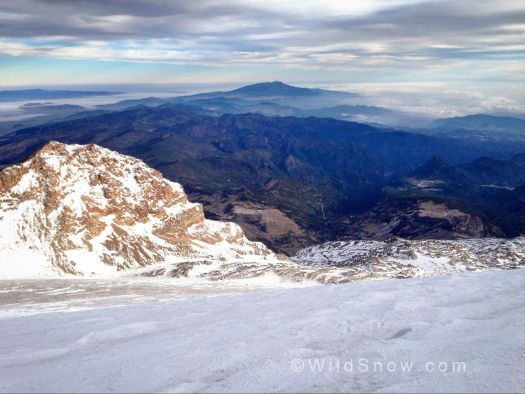
Mexico, that’s right, Mexico. This strip of white was about the only snow left on the Jamapa Glacier.
Easy enough to crampon up, but unarrestability and a low fun factor stifled our stoke to push to the top knowing there was no skiing to be had. Really icy glaciers are sketchy because a small trip can turn into a potentially deadly accident — a standard self arrest with a mountaineering piolet doesn’t work on blue ice. Also, being on points on moderate terrain just isn’t a great time. With rumbling stomachs, we turned back below the 45-degree final push to Orizaba’s crater rim.
Monster views still spread out before us. Big smiles and no regrets followed us back to the hut.
Sure we had to deal with explaining skis to customs in Mexico City and San Antonio, Texas. True, we carried planks of wood and carbon around an 18 thousand foot volcano for minimal skiing. But, the adventure shone through bright, making any such featherbrained frivolity well worth it.
Skiing is not just an activity, but also an excuse. It is a reason — not always reasonable, but none-the-less present — for going into the mountains. We had a blast checking out Puebla, Mexico City, and the small communities around the volcano. We ate amazing food and met awesome people. Our five and half day trip south landed us maybe a couple thousand feet of skiing, but also excused an escapade into a foreign environment and culture, lending the truest sense of adventure.
So at the end of our trip an AT skier, telemarker, and snowboarder walk into a bar in Mexico. I order beer. Marc orders club soda with lime. Jim orders a shot of Mezcal. I am sure there is a good joke in there somewhere, but I haven’t been able to figure it out just yet. Head south and see if you can.
Dr. Alex Lee lives in Anchorage, Alaska. Alex is a professor at Alaska Pacific University, teaching philosophy and environmental studies. He also works as a sometimes guide, naturalist, writer, and photographer.

